I.D. Antarctica 2023 – Week #2 Mystery Creature
Hello from Palmer Station, Antarctica!
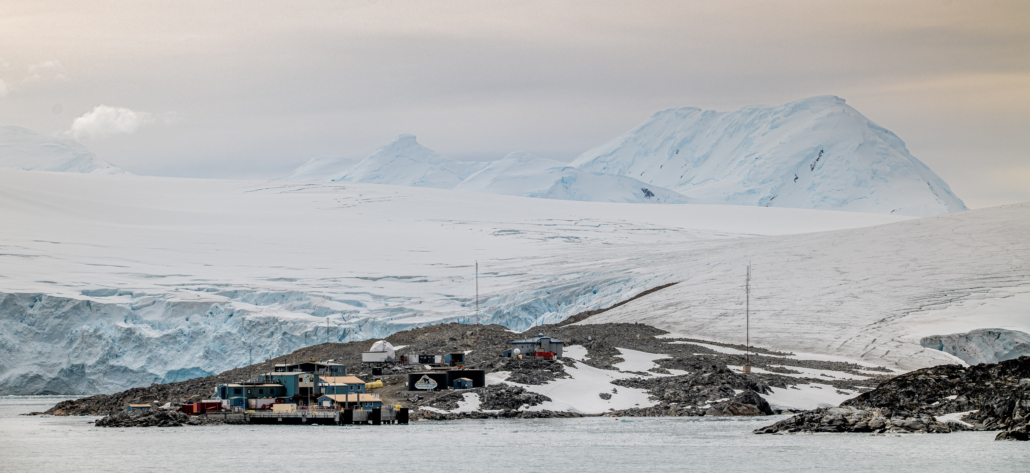
We arrived to Palmer Station just in time to ring in the new year!
One of the scientists found a giant rubber buoy floating in the ocean the day before New Years Eve, which is a very sad sight. It’s alarming how much human waste we found each year floating in this pristine environment. We always remove trash from the ocean when its safe, and we decided to make good use of this buoy by dropping it for New Year’s Eve like they do in New York City!
It didn’t take long to settle in to our new home, Palmer Station has just about everything you could want! Comfortable beds, great food, a big gym, a movie center, and even a jacuzzi…
We will post some pictures of life around Palmer Station next week.
One of our primary science goals while at Palmer Station is to collect zooplankton and larval fishes. We deploy net tows of the stern of a relatively small boat called Hadar to collect these organisms. Here is Hadar tied up in our icy harbor:
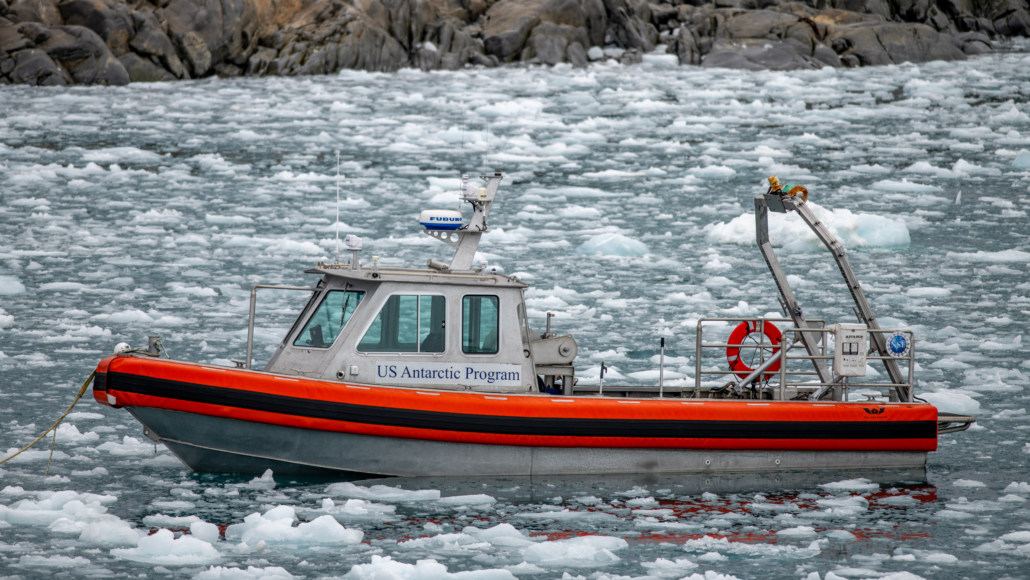
We used the metal structure, which is called an A-frame, on the back of Hadar to lift up a net and slowly lower it into the ocean. While the net is sinking to a depth of about 50 meters (~164 feet), we slowly drive Hadar forward. Below is Andrew and one of the fantastic boat captains (Matt G.) deploying a net!
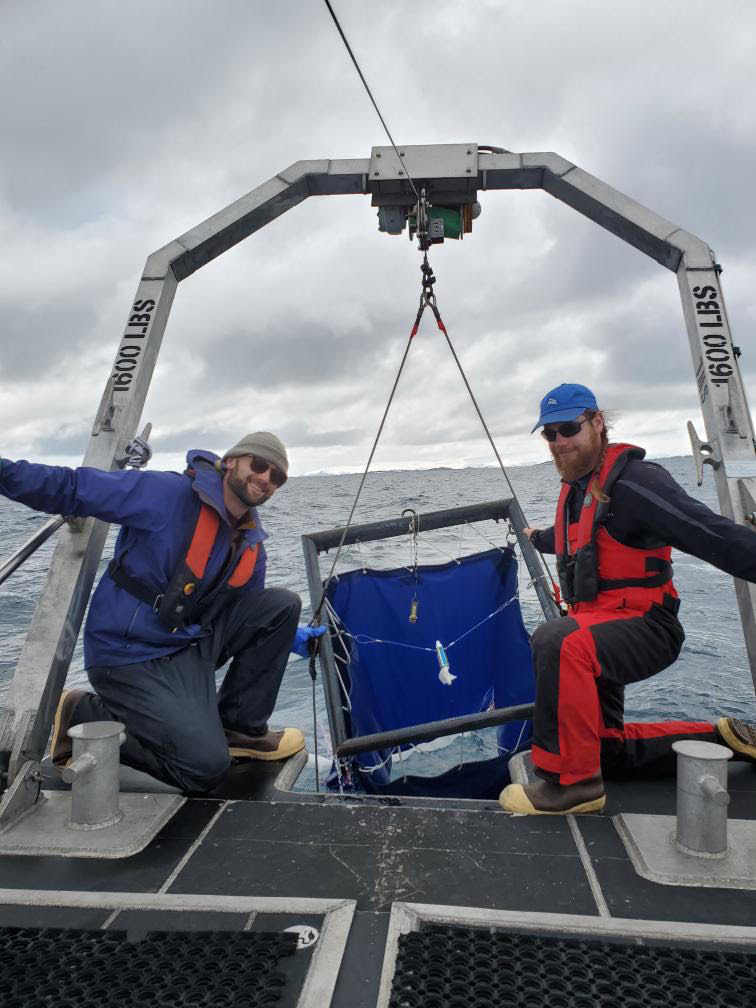
We tow the net for about 15 minutes, then bring the net back up to the surface to see what we caught! One of the most fun things about working with zooplankton is you never know what you might collect.
Mystery Creature
We recently found this beautiful larval fish, which is likely only a couple months old, that appears to have something lodged in it’s mouth.
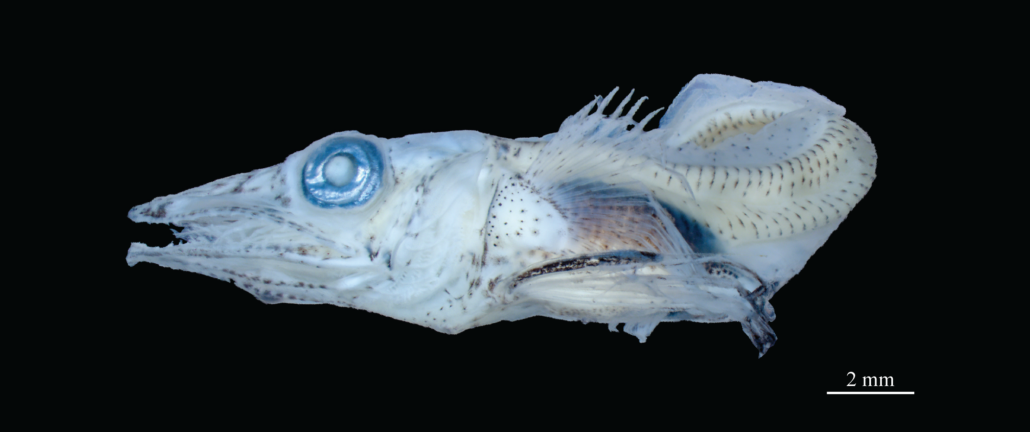
Upon closer inspection, we discovered that this larval fish was in the middle of eating an Antarctic krill when we caught it! In the close-up image of its head below, you can see the krill’s eye and antennae. This is another example of just how important krill are to this food web – they’re consumed by everything from a giant skua to a tiny larval fish.
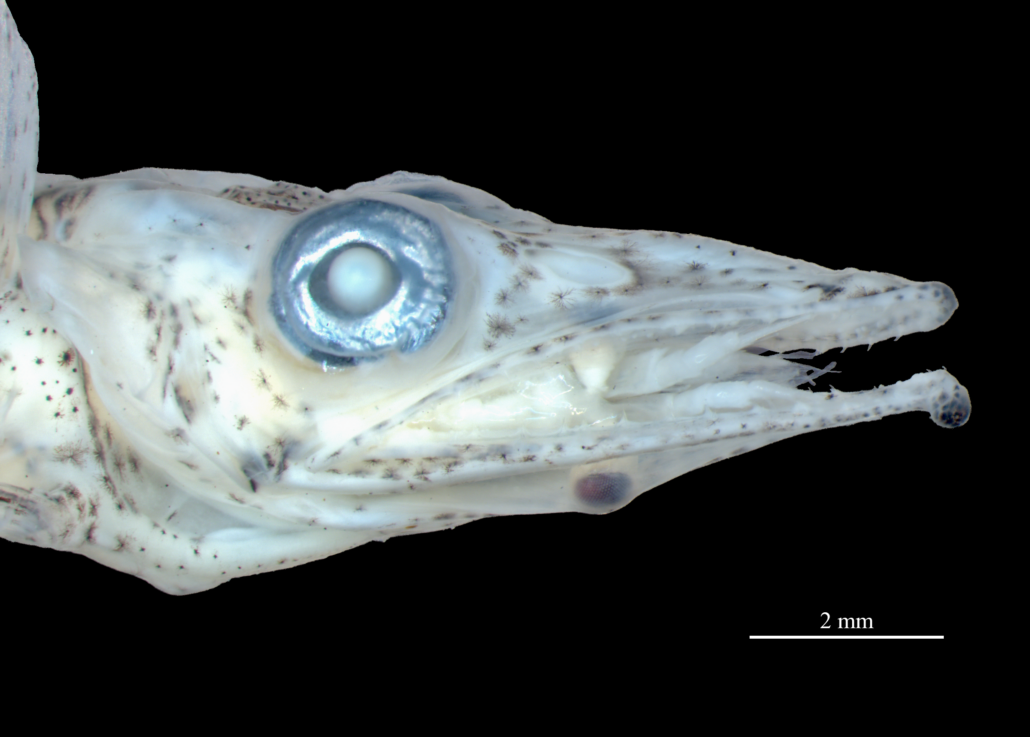
It can be especially challenging to identify larval fishes around the world because most identification guides and dichotomous keys are focused on adults. However, these early stages of fishes are incredibly important part of the food web and Andrew is very interested in learning more about them for his PhD research.
Can you identify what species of Antarctic larval fish just ate this krill?
Use this Larval Fish Dichotomous Key to help you solve the mystery.


